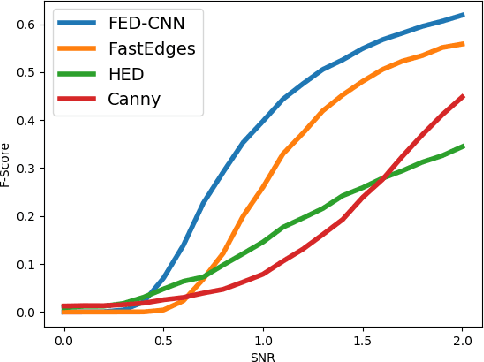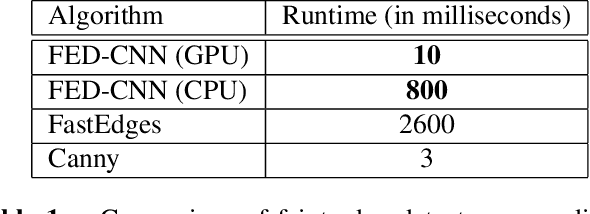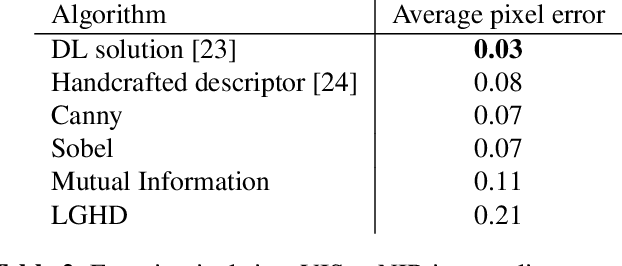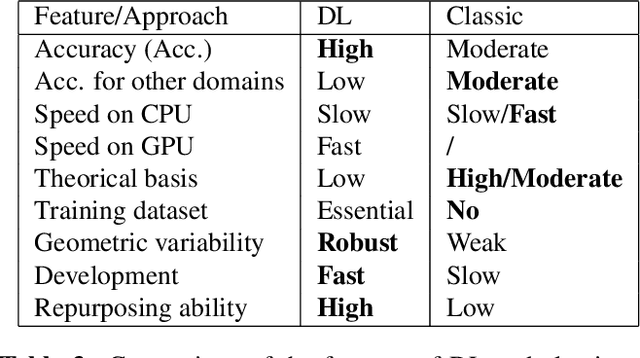Classic versus deep approaches to address computer vision challenges
Paper and Code
Jan 24, 2021



Computer vision and image processing address many challenging applications. While the last decade has seen deep neural network architectures revolutionizing those fields, early methods relied on 'classic', i.e., non-learned approaches. In this study, we explore the differences between classic and deep learning (DL) algorithms to gain new insight regarding which is more suitable for a given application. The focus is on two challenging ill-posed problems, namely faint edge detection and multispectral image registration, studying recent state-of-the-art DL and classic solutions. While those DL algorithms outperform classic methods in terms of accuracy and development time, they tend to have higher resource requirements and are unable to perform outside their training space. Moreover, classic algorithms are more transparent, which facilitates their adoption for real-life applications. As both classes of approaches have unique strengths and limitations, the choice of a solution is clearly application dependent.
 Add to Chrome
Add to Chrome Add to Firefox
Add to Firefox Add to Edge
Add to Edge